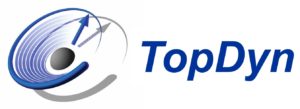

Seminar über die Physik der kondensierten Materie (SFB/TRR173 Spin+X und SFB/TR288 Kolloquium, TopDyn-Seminar)
April 10, 2018 at
2:15 p.m.
in
Lorentz-Room, Staudinger Weg 7, 05-127
Univ-Prof. Dr. Jure Demsar
Univ.-Prof. Dr. Hans-Joachim Elmers
Univ.-Prof. Dr. Mathias Kläui
Univ.-Prof. Dr. Thomas Palberg
Topological Magnon Materials and Transverse Magnon Transport
Dr. Alexander Mook (Martin Luther University Halle-Wittenberg, Germany)
Topology has conquered the field of condensed matter physics with the discovery of the quantum Hall effect. Since then the zoo of topological materials is steadily increasing. In this talk, I demonstrate how to realize different topological phases with magnons: the magnon pendants to topological insulators [1] as well as Weyl [2] and nodal-line semimetals are presented [3].
Magnon bulk spectra are characterized by topological invariants, dictating special surface properties. For instance, the bulk bands of topological magnon insulators (TMIs) carry nonzero Chern numbers, causing topological magnon edge states that revolve unidirectionally the sample [1]. Magnon Weyl semimetals possess zero-dimensional band degeneracies acting as source and sink of Berry curvature; at their surface they feature "magnon arcs" connecting the surface projections of Weyl points [2]. Magnon nodal-line semimetals exhibit one-dimensional band degeneracies, i. e., closed loops in reciprocal space. Surface projections of these nodal lines host "drumhead" surface states whose details depend strongly on the surface termination [3].
Similar to the electronic case, nonzero Berry curvature causes transverse transport, that is, magnon Hall effects [1]. I show how these effects can be quantified by classical spin dynamics simulations of the TMI Cu(1,3-benzenedicarboxylate) [4] and a skyrmionic TMI [5].
[1] H. Katsura et al., Phys. Rev. Lett. 104, 066403 (2010); Y. Onose et al., Science 329, 297 (2010); R. Matsumoto et al., Phys. Rev. Lett. 106, 197202 (2011); L. Zhang et al., Phys. Rev. B 87, 144101 (2013); A. Mook et al., Phys. Rev. B 89, 134409 (2014); A. Mook et al., Phys. Rev. B 90, 024412 (2014)
[2] F.-Y. Li et al., Nature Commun. 7, 12691 (2016); A. Mook et al., Phys. Rev. Lett. 177, 157204 (2016)
[3] A. Mook et al., Phys. Rev. B 95, 014418 (2017)
[4] Chisnell et al., Phys. Rev. Lett. 115, 147201 (2015); Hirschberger et al., Phys. Rev. Lett. 115, 106603 (2015); A. Mook et al., Phys. Rev. B 94, 174444 (2016)
[5] A. Mook et al., Phys. Rev. B 95, 020401(R) (2017)